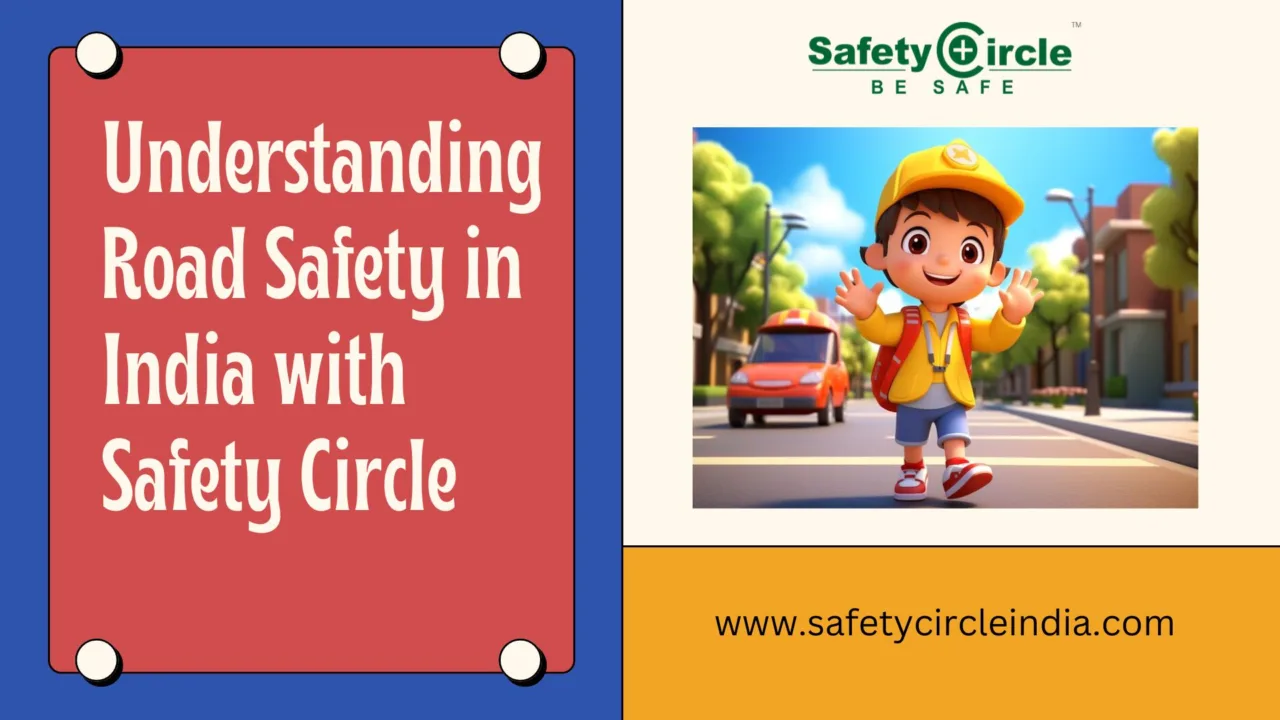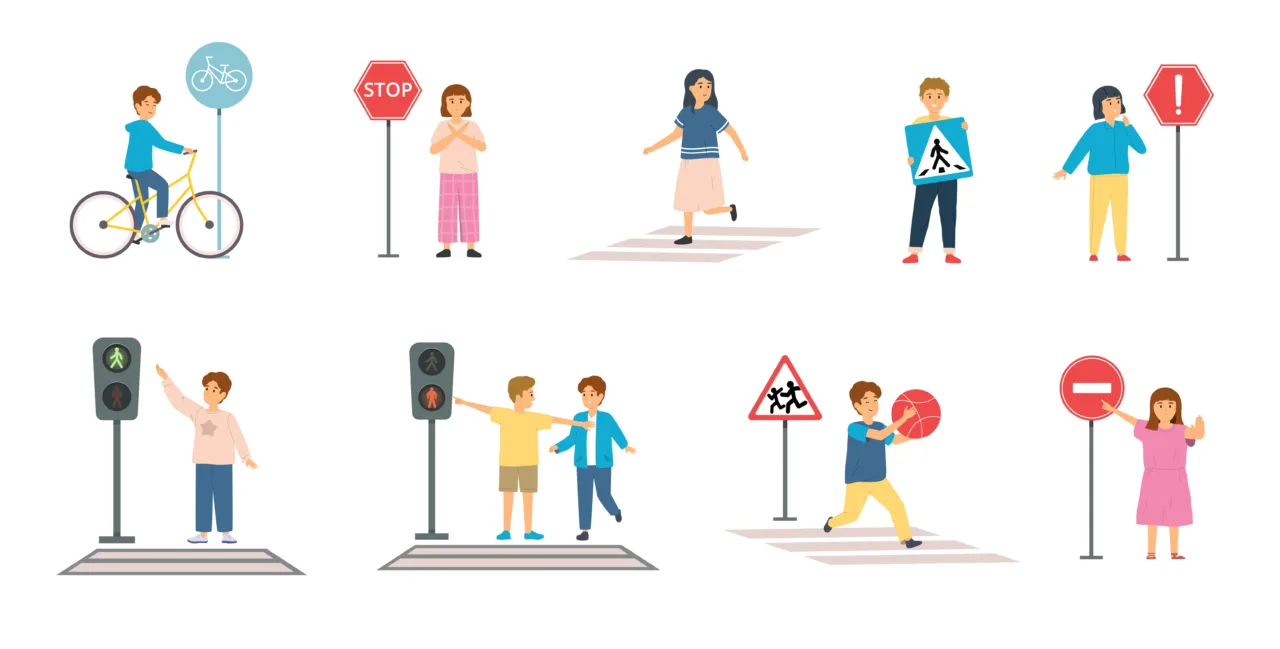India has the second largest road network in the world and has a very different scenario as far as traffic is concerned and hence some facts are different when it comes to road safety. The increase in automobiles and the population density increases the necessity for sober road safety standards. Though the government and authorities have been doing their best to prevent this problem, Road Safety in India still poses a problem. Hence, it is of paramount importance to comprehend road safety rules and be able to identify road safety signs as a way to eradicate more accidents and enhance a safer road system.
At Safety Circle, we understand that implementing practical solutions to educate the public on measures they can apply to avoid accidents and foster the emergence of a safer road culture is of paramount importance. In this blog, we will look at the key facts about road safety in India as well as the reasons why there is a need for all to abide by road safety laws and understand the road safety signs.
The State of Road Safety in India
India alone contributes approximately 11% of the global road death total even though it has only 1% of the world’s vehicles. undefined The road accidents become life-threatening culminating in the deaths of 55 lakh people, which is a public health nightmare. Most of these incidents could have been prevented by observing basic road safety practices, observing traffic signals, and being careful.
Measures put in place by the Indian government include enhanced traffic laws and legislation, enhanced penalties and fines, and public awareness initiatives. But it also means that road safety is not solely the responsibility of the authorities but also of drivers, walkers, and riders of different vehicles. A few tips can go a long way towards preventing accidents on the road and ensuring that Indians have safe roads to use.
The Importance of Road Safety Rules
Lessons taught on road safety entail standards to be observed by participants in road transport to minimize accidents. Such rules involve a variety of expectations and roles constructed including speed limit rules, lane rules, traffic signal rules, and rules regarding overtaking among others. As much as these rules might seem relatively simple, a lot of cases of accidents are a result of the above-mentioned rules being infringed.
Some of the fundamental road safety rules every Indian road user must follow include:
- Wear Seat Belts and Helmets: Using seat belts while traveling in a car and helmets while riding two-wheelers has been made compulsory and both of these can go a long way in minimizing the possibility of getting injured or killed in the event of an accident.
- Obey Speed Limits: They include but are not limited to, excessive speed which is known to be one of the major causes of accidents. It is very important to adhere to the posted speed limit especially in areas of high traffic or in zones that surround schools.
- Do Not Drink and Drive: This is because when a driver is under the influence of alcohol or drugs, he or she loses control of his/her senses leading to accidents. A surety is given to people caught in the act of driving under the influence of alcohol.
- Avoid Distracted Driving: They reduce attention: texting, calling, or performing any activity on a mobile phone while driving may cause an accident. This should be avoided at all costs because the car is in the middle of the road and any moment of misplaced attention could cause an accident.
- Follow Traffic Signals and Signs: Such actions as running over traffic signals or just speeding through an amber light result in accidents. Never turn or merge into traffic until you see the green light, always be careful of other vehicles.
- Give Way to Pedestrians: Thus pedestrian protection is one of the components of road protection. When people are likely to be on foot always be prepared to yield to them especially when they are on the crosswalk and also be very slow when moving in such areas.
At Safety Circle, we strongly encourage you to update your knowledge of these road safety rules so that you can always practice road safety in India.
Road Safety Signs: Your Guide on the Road
Traffic signs are part of the road traffic control system and are very important in India. They are very useful in giving information on road conditions, traffic legislation and laws as well as other road perils thus enabling those on the road to drive safely. These are signs that every road user – whether a driver, cyclist, or pedestrian must understand.
There are three main categories of road safety signs in India:
- Mandatory Signs: These signs refer to fixed rules that have to be obeyed. Going against the signal is a punishable act. Some are stop signs, no entry signs, and speed limit signs.
- Cautionary Signs: They alert the other road users of possible dangers that may lie ahead on the road. Some of the familiar signals include sharp turn signs, pedestrian crossing signs, and school zone signs among others. They are expected to make the driver cautious to ensure that he or she prepares for what is ahead of him or her on the road.
- Informative Signs: These signs offer information as to distances, routes, and the direction to be taken. Some of them are highway route indicators, location boards, and public utility signs such as hospital or petrol station signs.
People must know these signs to ensure safer roads for everyone. At Safety Circle training, we always ensure that our training programs include information on road safety signs and how different road users can benefit from them.
Steps Toward Improving Road Safety in India
To further enhance safety on roads in India the following actions must be implemented by everybody and the government. Here are some steps that can contribute to safer roads:
- Promote Public Awareness Campaigns: Such campaigns on road safety rules and signs will also improve the knowledge levels of the populace in any given country and standardize the behaviours thus appreciably reducing the numerous road accidents.
- Strengthen Traffic Law Enforcement: This can only be possible if the authorities increase measures on implementation of traffic laws for example through fines against violation of speed limits and seat belt regulations.
- Infrastructure Development: Road works like constructing superior highways, improving Road illumination, as well as preserving road designs can increase the general degree of safety of roads.
- Regular Training and Workshops: Companies, schools, and communities can contact Safety Circle to book road safety awareness workshops for people to learn the current traffic rules and practices.
- Technology Integration: Sophisticated intelligent systems such as traffic control system signals, traffic signal control, and surveillance cameras can also aid in the monitoring of traffic and eventually decrease the occurrence of accidents.
Conclusion
Road Safety in India is a crucial problem that needs a solution, which is a concern of all. Therefore, to increase the safety of everyone, including drivers, pedestrians, and cyclists, it is crucial to learn the road safety rules and identify the road safety signs. Thus it becomes imperative to spread awareness and take measures to adhere to the guidelines mentioned above, to pave the way for lessening of accidents and fatalities on Indian roads.
At the safety circle, everybody should have the knowledge and material needed to contribute to the cause of avoiding more accidents. As repeated, road safety begins with you—so be a responsible driver; respect traffic signs and signals, and be watchful. In this manner, everyone can contribute to making the roads of India safer for all users.


